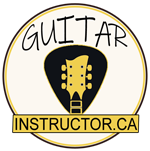
[ad_1]
Mastering Your Guitar Technique with These Practice Exercises
Playing the guitar is a popular hobby for people of all ages. Whether you’ve been playing for years or are just starting out, there are always ways to improve your technique and become a better guitarist. One of the best ways to do this is through practice exercises that target specific areas of your playing. In this article, we will explore some practice exercises that can help you master your guitar technique and become a more skilled player.
Before we get into the exercises, it’s important to emphasize the importance of consistent practice. Like any skill, playing the guitar requires regular practice in order to improve. It’s not enough to simply go through the motions – you need to be intentional about your practice and focus on specific areas that need improvement.
With that in mind, let’s take a look at some practice exercises that can help you become a better guitarist.
Warm-Up Exercises
Before diving into more advanced techniques, it’s important to start with some warm-up exercises to prepare your fingers for playing. These exercises can help improve flexibility and dexterity, making it easier to play more complicated pieces later on. Here are a few examples of warm-up exercises:
1. Finger Stretching: Start by placing your fingers on the first fret of the guitar and then slowly stretch them to the fifth fret. Hold this stretch for a few seconds and then release. Repeat this exercise on each string, moving up the fretboard as you go.
2. Chromatic Exercises: Play a chromatic scale up and down the fretboard, using one finger per fret. This exercise helps to improve finger independence and strength.
3. String Skipping: Play a simple pattern that involves skipping strings, such as 1-3-2-4 on each string. This exercise helps to improve accuracy and coordination.
Barre Chord Exercises
Barre chords are a crucial part of any guitarist’s repertoire, but they can be challenging to master. These exercises can help you improve your barre chord technique and make it easier to play more complex chords.
1. Barre Chord Workout: Start by playing simple barre chords up and down the fretboard, making sure to press down evenly with your index finger. As you become more comfortable with this exercise, try using different barre chord shapes and incorporating them into chord progressions.
2. Barre Chord Finger Strength: Play a simple barre chord shape and hold it for as long as you can without letting the notes buzz or mute. This exercise helps to improve finger strength and endurance.
3. Barre Chord Arpeggios: Play arpeggios using barre chord shapes, focusing on playing each note cleanly and evenly. This exercise helps to improve accuracy and tone production.
Scales and Modes
Scales and modes are fundamental to understanding music theory and can greatly improve your overall playing ability. By practicing scales and modes, you can improve your technique, finger strength, and knowledge of the fretboard.
1. Major Scale Workout: Play the major scale up and down the fretboard in different keys. This exercise helps improve finger coordination and knowledge of the fretboard.
2. Pentatonic Scale Exercises: Practice playing the pentatonic scale in various positions on the fretboard. This exercise helps to improve phrasing and soloing ability.
3. Modal Exercises: Practice playing the various modes (such as Ionian, Dorian, Phrygian, Lydian, Mixolydian, Aeolian, and Locrian) in different keys. This exercise helps to improve knowledge of music theory and ear training.
Rhythm and Timing
Good rhythm and timing are essential for any guitarist, regardless of the style of music you play. These exercises can help improve your sense of rhythm and timing, making it easier to play with others and stay in time with the music.
1. Metronome Practice: Play simple exercises with a metronome, such as strumming chords or playing scales, and focus on staying in time with the beat. This exercise helps to improve your sense of rhythm and timing.
2. Rhythmic Patterns: Practice playing different rhythmic patterns, such as eighth notes, triplets, and syncopated rhythms. This exercise helps to improve your ability to play different rhythms accurately.
3. Playing with Backing Tracks: Play along with backing tracks in different styles of music, focusing on staying in time with the music and playing with good feel. This exercise helps to improve your ability to play along with others and stay in time with the music.
Conclusion
Becoming a skilled guitarist takes time, practice, and dedication. By incorporating these practice exercises into your routine, you can improve your technique, finger strength, knowledge of the fretboard, and sense of rhythm and timing. With consistent practice, you can become a better guitarist and achieve your musical goals.
Remember to be patient and stay focused on your goals, and don’t be afraid to seek out the guidance of a qualified instructor if you need help with any of these exercises. With perseverance and dedication, you can master your guitar technique and become a more skilled player.
So, keep practicing, and enjoy the journey of becoming a better guitarist!
Warm-Up Exercises
Finger Stretching
Start by placing your fingers on the first fret of the guitar and then slowly stretch them to the fifth fret. Hold this stretch for a few seconds and then release. Repeat this exercise on each string, moving up the fretboard as you go.
Chromatic Exercises
Play a chromatic scale up and down the fretboard, using one finger per fret. This exercise helps to improve finger independence and strength.
String Skipping
Play a simple pattern that involves skipping strings, such as 1-3-2-4 on each string. This exercise helps to improve accuracy and coordination.
Barre Chord Exercises
Barre Chord Workout
Start by playing simple barre chords up and down the fretboard, making sure to press down evenly with your index finger. As you become more comfortable with this exercise, try using different barre chord shapes and incorporating them into chord progressions.
Barre Chord Finger Strength
Play a simple barre chord shape and hold it for as long as you can without letting the notes buzz or mute. This exercise helps to improve finger strength and endurance.
Barre Chord Arpeggios
Play arpeggios using barre chord shapes, focusing on playing each note cleanly and evenly. This exercise helps to improve accuracy and tone production.
Scales and Modes
Major Scale Workout
Play the major scale up and down the fretboard in different keys. This exercise helps improve finger coordination and knowledge of the fretboard.
Pentatonic Scale Exercises
Practice playing the pentatonic scale in various positions on the fretboard. This exercise helps to improve phrasing and soloing ability.
Modal Exercises
Practice playing the various modes (such as Ionian, Dorian, Phrygian, Lydian, Mixolydian, Aeolian, and Locrian) in different keys. This exercise helps to improve knowledge of music theory and ear training.
Rhythm and Timing
Metronome Practice
Play simple exercises with a metronome, such as strumming chords or playing scales, and focus on staying in time with the beat. This exercise helps to improve your sense of rhythm and timing.
Rhythmic Patterns
Practice playing different rhythmic patterns, such as eighth notes, triplets, and syncopated rhythms. This exercise helps to improve your ability to play different rhythms accurately.
Playing with Backing Tracks
Play along with backing tracks in different styles of music, focusing on staying in time with the music and playing with good feel. This exercise helps to improve your ability to play along with others and stay in time with the music.
Conclusion
Becoming a skilled guitarist takes time, practice, and dedication. By incorporating these practice exercises into your routine, you can improve your technique, finger strength, knowledge of the fretboard, and sense of rhythm and timing. With consistent practice, you can become a better guitarist and achieve your musical goals.
[ad_2]
